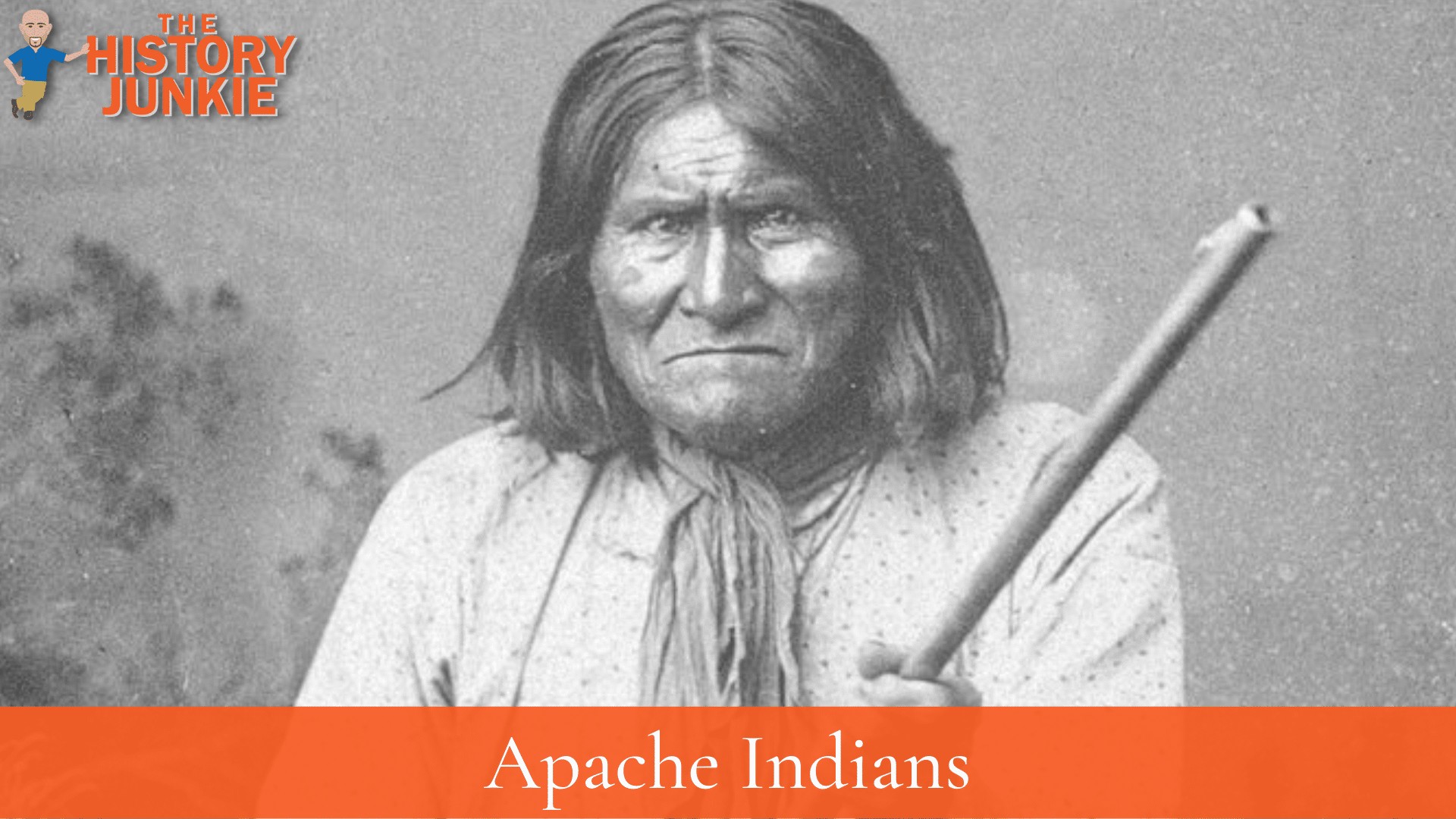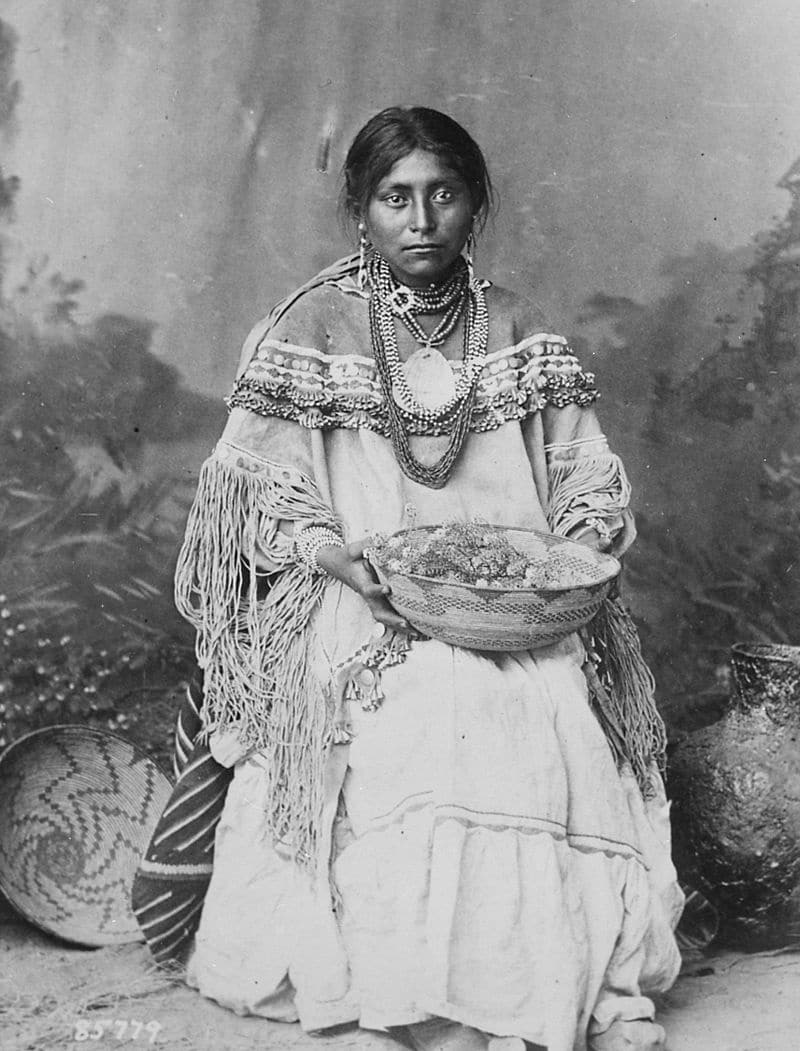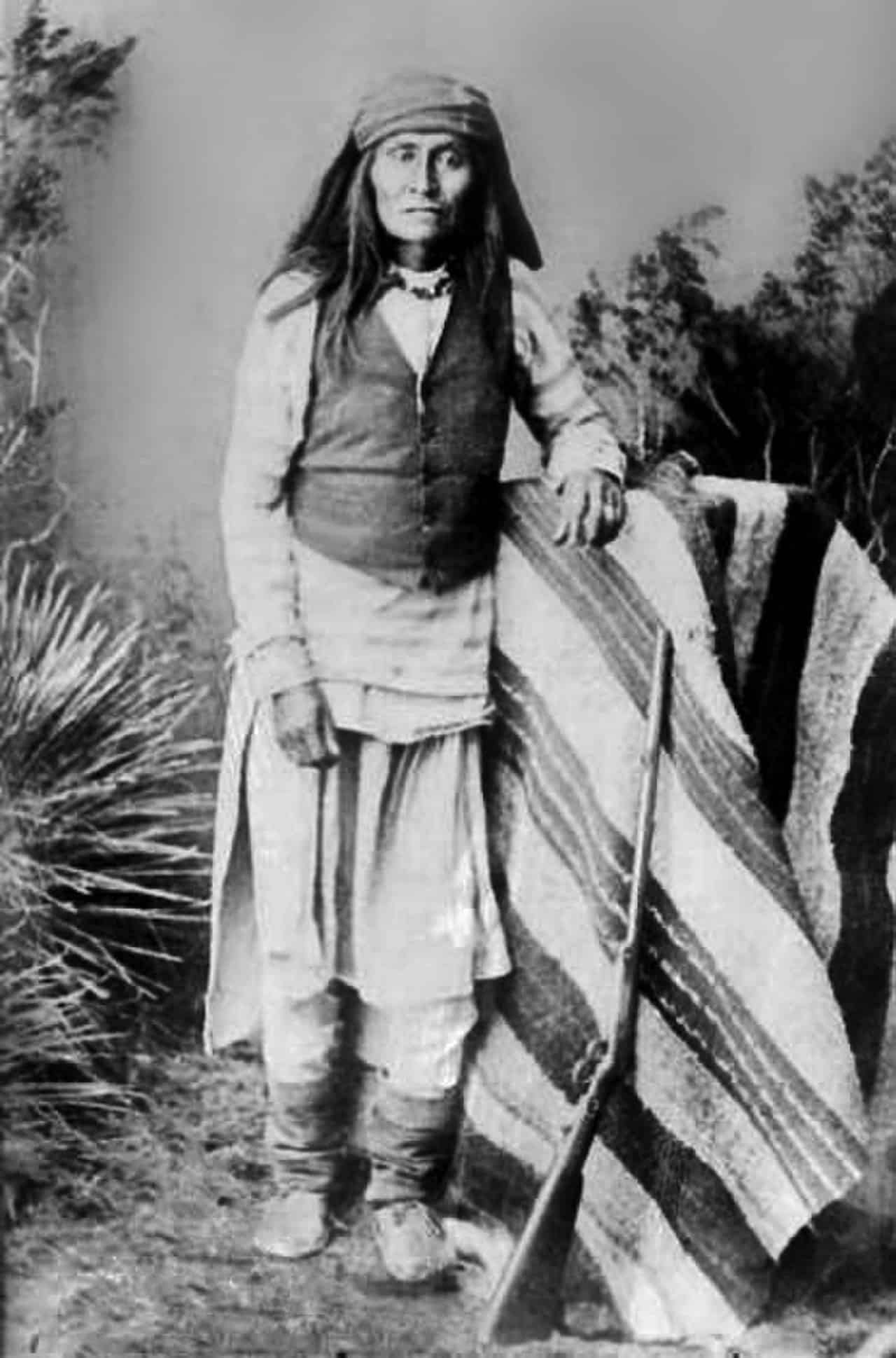America is full of Native American History, and its influence on this country can not be denied. While every Indian tribe and nation played a significant role in our culture, only a few can claim to have influenced the Wild West more than the Apache Indians.

The Apache Indians were fierce warriors who refused to relinquish their land despite growing odds against them.
They are a group of culturally related Native American tribes in the Southwestern United States. They are distant cousins to the Navajo, with which they share the Southern Athabaskan languages.
Jump to:
Apache Indian Sub-Topics
- Apache Culture
- Apache Government
- Apache Housing
- Famous Apache
- Apache Wars
- Apache Clothing
- Apache Customs
- Apache Religion

Historically, the Apache homelands have consisted of high mountains, sheltered and watered valleys, deep canyons, deserts, and the southern Great Plains, which includes areas that are now Eastern Arizona, Northern Mexico, New Mexico, West Texas, and Southern Colorado. These areas are collectively known as Apacheria.
The Apache tribe has a long history of fighting for their territory.
They fought the invading Spanish and Mexican peoples during the 17th century and the Americans during the 19th century. Each of their adversaries underestimated their ability, and the Apache proved to be fierce warriors and skillful tacticians.
Famous Gunslingers also had to contend with the Apache Indians when fleeing from the law.
List of Apache Tribes
The term Apache refers to six major Apache-speaking groups: Chiricahua, Jicarilla, Lipan, Mescalero, Plains Apache, and Western Apache.
- Chiricahua - Lived in Southeastern Arizona
- Jicarilla - Lived in Northern New Mexico, Southern Colorado, and the Texas Panhandle
- Lipan - Lived around different parts of Texas and now reside in Western Texas.
- Mescalero - Lived in Eastern New Mexico
- Plains Apache - Lived around Colorado and eventually Oklahoma
- Western Apache - Includes various kinship groups. Lived within the boundaries of Arizona.
Contemporary Tribes
The following Apache tribes are federally recognized:
- Apache Tribe of Oklahoma
- Fort Sill Apache Tribe of Oklahoma
- Jicarilla Apache Nation, New Mexico
- Mescalero Apache Tribe of the Mescalero Reservation, New Mexico
- San Carlos Apache Tribe of the San Carlos Reservation, Arizona
- Tonto Apache Tribe of Arizona
- White Mountain Apache Tribe of the Fort Apache Reservation, Arizona
- Yavapai-Apache Nation of the Camp Verde Indian Reservation, Arizona

Early Contact
The Apache Indians were nomads who often followed the bison migration and hunted other game. They used domestic dogs to pull travois loaded with their possessions.
Their first contact with Europeans was with the Spanish, that explored the continent in the 16th century.
In April 1541, while traveling on the plains east of the Pueblo region, Francisco Coronado referred to the people as "dog nomads." He wrote:
After seventeen days of travel, I came upon a 'rancheria' of the Indians who follow these cattle (bison). These natives are called Querechos. They do not cultivate the land but eat raw meat and drink the blood of the cattle they kill. They dress in the skins of the cattle, with which all the people in this land clothe themselves, and they have very well-constructed tents, made with tanned and greased cowhides, in which they live and which they take along as they follow the cattle. They have dogs that they load to carry their tents, poles, and belongings.
When the Spanish arrived, they disrupted an established trade between the Pueblo peoples and Southern Athabaskan. The Pueblo exchanged maize and woven cotton goods for bison meat, hides, and materials for stone tools.
The Apache evolved and quickly acquired horses, which improved their mobility for migration and quick raids on settlements. The Apache would continue to frustrate Francisco Coronado as they seemed to be aware of his movements and disappear before he could find them.
While the Apache could not compete with European weaponry and tactics, they continued to evolve as a people. Soon, the Spanish and the rest of Europe were focused on the Caribbean and other European conflicts, and the Apache would manage to stay out of harm's way for the following century.
Conflict with Americans
The Apache and Spanish settlers seemed to get along. After the initial shock, the two settled in and would trade with each other. However, the Apache, being tribal, did not always have the same feeling among them.
This division meant that some villages would raid settlements when other Apaches were friendly.
During the Mexican-American War, the Apache gave the United States military permission to march through their land and into Mexico. When the U.S. claimed former territories of Mexico in 1846, Mangas Coloradas signed a peace treaty with the nation, respecting them as conquerors of the Mexicans' land.
An uneasy peace between the Apache and the new citizens of the United States held until the 1850s.
In 1849, gold was discovered in San Francisco, which resulted in the California Gold Rush. Citizens from the east began to flood into California, which meant they would often cross in and out of Apache land. The tense relationship between the Apache and Americans began to become hostile. These became known as the Apache Wars.
When the Civil War occurred, the nation slowed its westward migration. However, the Apache continued to defend their home. They did not choose a side and fought against the Union and Confederate Army when they believed they were infringing on their land.
After the War, the United States continued to move west. The United States broke multiple treaties they had with the Apache and continued to push them off of their land.
While the Apache would be the last of the tribes to surrender under their leader, Geronimo, they would meet the same fate as the other Native American tribes.
They were placed on reservations and remain there, but it does not take away from their illustrious history.

Frequently Asked Questions
What Is the Apache Tribe Famous For?
The Apache Tribe is famous for fighting for its land and its fierce warriors. They held off the Spanish, Mexican, and expanding Americans. They were expert horseback riders, capable of quick and deadly strikes with a bow and arrow or rifle, and were hard to pin down.
Where Do Apache Indians Originate From?
The name Apache originated from the Europeans who came to the New World. The Apache call themselves Inde or Diné, which means "the people." They were located all over the southwest prior to the arrival of Europeans. This would include Arizona, New Mexico, Texas, Oklahoma, and even Colorado. There were several bands of them, and they were nomadic.
Are There Any Apache Left?
The Apache still exists today but lives on five different reservations. Three of the reservations are in Arizona, and the other two are in New Mexico.
What Do You Call An Apache Warrior?
The Apache Warrior was one of the most feared people on the western frontier. They called themselves Aiaha and were well-trained, disciplined, and efficient.
Who Were The Apache Leaders?
The Apache had many powerful leaders. The most well-known are Cochise, Mangas Coloradas, Victorio, and, of course, Geronimo. Of these leaders, Geronimo is the most well-known.
